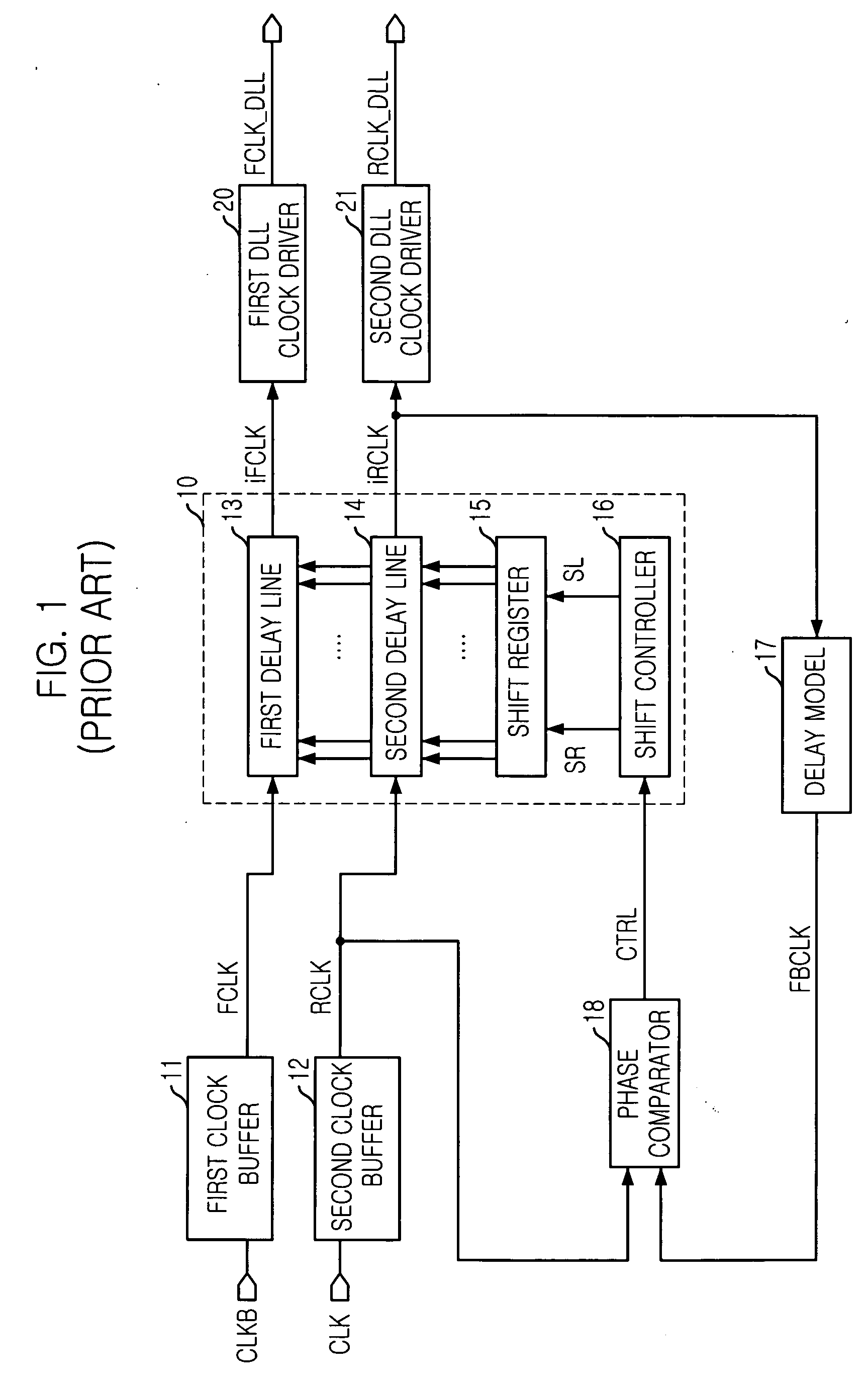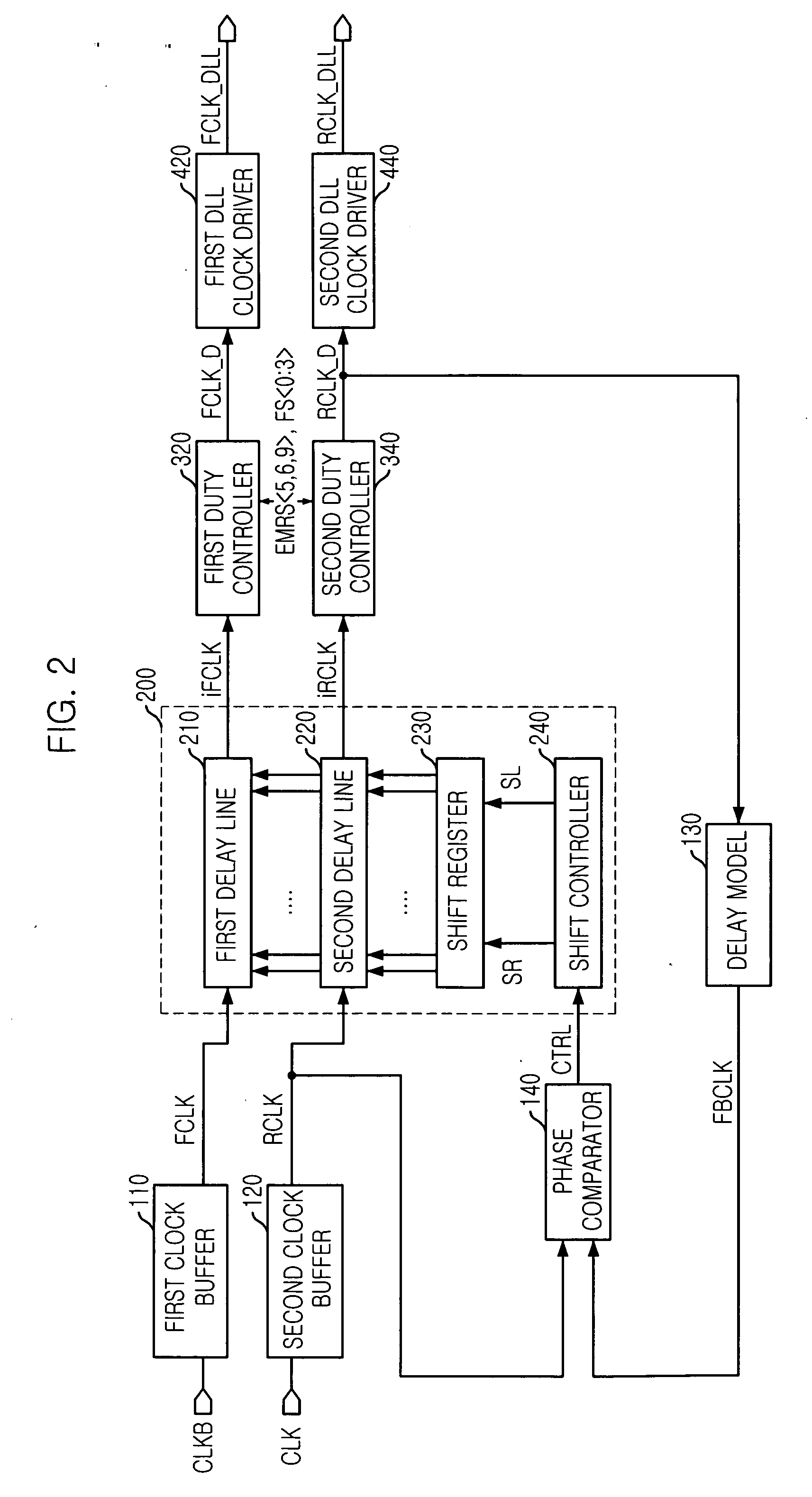Delay locked loop for controlling duty rate of clock
a technology of duty rate and delay lock, which is applied in the direction of pulse generator, pulse manipulation, pulse technique, etc., can solve the problems of high cost, time-consuming and labor-intensive, and delay time between the external clock and the internal clock
- Summary
- Abstract
- Description
- Claims
- Application Information
AI Technical Summary
Benefits of technology
Problems solved by technology
Method used
Image
Examples
first embodiment
[0026]FIG. 2 is a block diagram setting forth a register-controlled DLL in accordance with the present invention.
[0027] Referring to FIG. 2, the DLL of the present invention includes a first clock buffer 110, a second clock buffer 120, a first delay line 210, a second delay line 220, a shift register 230, a first duty controller 320, a second duty controller 340, a first DLL driver 420, a second DLL driver 440, a delay model 130, a phase comparator 140, and a shift controller 240.
[0028] Herein, the first clock buffer 110 receives an external clock bar signal CLKB and generates an internal falling clock FCLK in synchronization with a falling edge of an external clock signal CLK. The second clock buffer 120 receives the external clock signal CLK and generates an internal rising clock signal RCLK in synchronization with a rising edge of the external clock signal CLK.
[0029] The first delay line 210 receives the internal falling clock FCLK in synchronization with the falling edge of th...
second embodiment
[0048]FIG. 5 is a block diagram setting forth a DLL in accordance with the present invention.
[0049] Referring to FIG. 5, it is understood that the DLL of the second embodiment does not employ a clock buffer, a delay line and a duty controller for an external clock bar signal CLKB because the external clock bar signal CLKB is not applied to the DLL, which is different from the DLL of FIG. 2. The reason is that the DLL of the second embodiment includes a clock buffer 120 of a CMOS inverter type.
[0050] Therefore, in accordance with the second embodiment of the present invention, a duty controller 360 receives an output clock iRCLK of a delay line 220 so as to generate a falling DLL clock FCLK_D and a rising DLL clock RCLK_D for controlling a duty rate.
[0051]FIG. 6 is a circuit diagram illustrating the duty controller 360 of FIG. 5.
[0052] Referring to FIG. 6, a signal generator 368 of the duty controller 360 is provided with a latch unit 368a, a buffer 368b for outputting the rising ...
PUM
 Login to View More
Login to View More Abstract
Description
Claims
Application Information
 Login to View More
Login to View More - R&D
- Intellectual Property
- Life Sciences
- Materials
- Tech Scout
- Unparalleled Data Quality
- Higher Quality Content
- 60% Fewer Hallucinations
Browse by: Latest US Patents, China's latest patents, Technical Efficacy Thesaurus, Application Domain, Technology Topic, Popular Technical Reports.
© 2025 PatSnap. All rights reserved.Legal|Privacy policy|Modern Slavery Act Transparency Statement|Sitemap|About US| Contact US: help@patsnap.com



